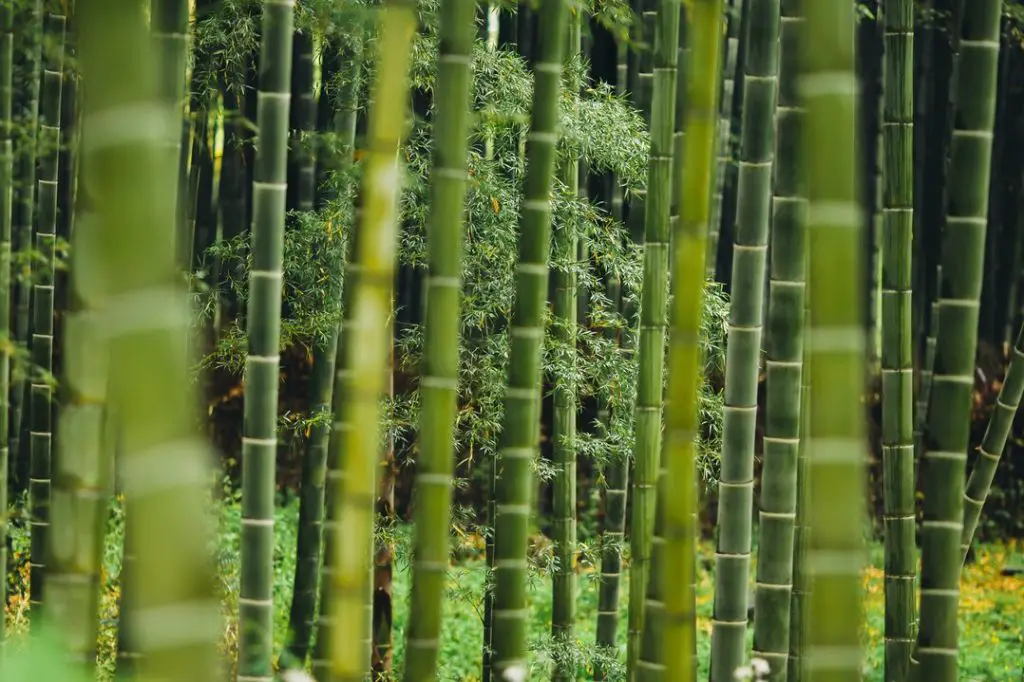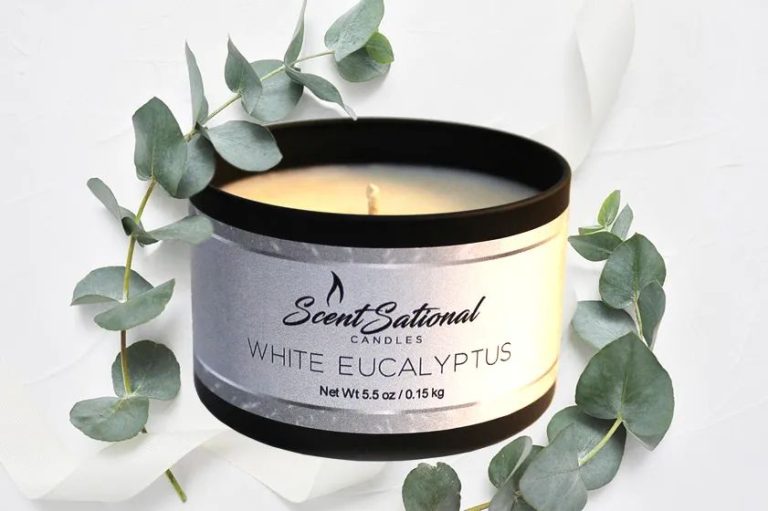What Type Of Scent Is Bamboo?
Bamboo is known for its light, fresh, and green scent profile. The woody grass plant emits an aroma that is often described as reminiscent of the outdoors. While bamboo itself does not produce fragrant flowers or fruits, the stems and leaves have a distinctive pleasant smell. The primary fragrance notes detected in bamboo are green, grassy, woody, and lightly floral. The scent can range from crisp and bright to warm and earthy depending on the species and processing method.
The characteristic bamboo perfume comes from compounds within the plant stems. Bamboo contains an aromatic chemical called cis-3-Hexenal that provides fresh “cut grass” and green leafy notes. Other chemicals like β-ionone contribute light floral aromas. The woody odor comes from lignin and cellulose fiber in the hollow bamboo stalks and stems.
When incorporated into perfumes and fragrances, bamboo evokes a sense of tranquility, harmony with nature, purity, and quiet strength. The light and gentle aroma works well for perfumes designed to relax, soothe, and comfort. Bamboo’s cooling properties also make it suitable for summer fragrances.
Grass Family Origins
Botanically, bamboo is a member of the grass family Poaceae, subfamily Bambusoideae (Wikipedia, 2023). Despite its tree-like appearance, bamboo is categorized as a giant tropical grass. There are over 1,600 species of bamboo that grow naturally across Asia, Africa, Australia and the Americas. Bamboo shares characteristics common to grasses such as the hollow stem, nodes, leaves and extensive root structures (Britannica, 2023).
Green and Woody Aromas

Freshly cut bamboo shoots and leaves have a distinctive green, vegetal scent. This results from compounds like hexanal, hexanol, and (Z)-3-hexenol which give fresh cut grass its characteristic aroma1. The bamboo plant is part of the grass family Poaceae, so it shares some aromatic similarities with other grasses. However, bamboo also has its own unique woody nuances. The stems emit balsamic, resinous notes that are described as a hybrid of floral and woody aromatics2. This produces an overall fragrance profile that is both fresh and green, yet also retains subtle woody undertones.
Effect of Drying
The scent of bamboo emerges from its leaves and stems. When fresh leaves and stems are cut and harvested, the scent is lighter, sweeter, and more transient. Bamboo releases an intense green fragrance similar to cut grass or fresh herbs. However, as the plant dries, the scent becomes deeper and richer.
The effect of drying on bamboo’s aroma is significant. When leaves and stems dry naturally, the color fades and the juicy plant matter shrinks and stiffens. Moisture evaporates from the plant cells, leaving behind fiber, oil, and the compounds responsible for aroma. With less water diluting the concentration of aromatic compounds, dried bamboo has a much stronger and lasting scent than fresh bamboo.
The primary odorants in dried bamboo have an earthy, woody character reminiscent of a forest. The dry bamboo odor profile is often described as a sweet, warm, and slightly balsamic aroma with hints of pine and sandalwood. The drying process allows the full depth and complexity of bamboo’s natural fragrance to emerge.
Variations Between Species
Different bamboo species have distinct scents that vary from fresh and grassy to woody and earthy. According to Bonparfumeur, “Bamboo has a subtle, fresh olfactory note, often described as green, vegetal and slightly woody.” However, there are over 1,000 species of bamboo, and each has its own unique scent profile.
For example, golden bamboo is described as having a sweet, fruity scent, while black bamboo is more pungent and bitter. Moso bamboo, one of the most common varieties, has an herbal aroma reminiscent of cut grass and fresh stems. In comparison, sweetshoot bamboo releases a tropical fragrance of coconut and pineapple when cut.
The specific compounds and concentrations that make up a bamboo species’ scent are determined by genetics, climate, soil conditions, age of the plant, and other environmental factors. As new shoots emerge, bamboo gives off the strongest green, cut grass smell. As stalks mature and lignify, the scent becomes woodier and more faded. Proper identification and selection of bamboo species allows perfumers to extract the most desirable scents for particular fragrances.
Culinary Bamboo Shoots
Fresh bamboo shoots have a mild, sweet aroma when harvested at the optimal time. According to Thai Food Paradise, bamboo shoots have an “earthy, nutty, sweet vegetable flavor” before canning or drying1. The aroma becomes more pungent and unpleasant when shoots are stored for a long time. Canned bamboo has a stronger, more astringent smell because the heating process releases volatile compounds. Some compare the smell to urine or manure. To mellow the aroma of canned shoots, it’s recommended to soak them in water before cooking.
Despite the unpleasant odor, bamboo shoots are edible and packed with nutrition. Proper preparation is key. Bamboo shoots should be peeled, boiled, and drained thoroughly to remove toxins and soften the texture. When cooked, the shoots develop a sweet, nutty, turnip-like flavor. Common culinary uses for bamboo shoots include Asian stir-fries, soups, and braised dishes.
Indoor Bamboo
Potted bamboo is a popular houseplant known for its air purifying abilities. The plant gives off a light, sweet, grassy scent when leaves are rubbed or plants are clustered together. According to Green Bamboo Scent, bamboo has an “aromatic medley of bergamot and green grass.” The fragrance is subtle and reminiscent of lying near a bamboo garden. Keeping several bamboo plants together indoors can amplify the gentle fragrance. The woody, earthy base notes become more apparent as the bamboo stalks mature and dry out. Proper watering and fertilizing will maintain the bright, green aroma of new bamboo growth.
Bamboo Essential Oil
Bamboo essential oil is derived by steam distilling the leaves and branches of the bamboo plant. When properly distilled, bamboo essential oil has a warm, woody, balsamic aroma with herbaceous nuances. According to Golden Bamboo Aroma Oil, “Our Golden Bamboo candle has the delightful scent of exotic bamboo paired with fresh apples. It smells like a rainforest paradise in a glass.”
The scent is reminiscent of a bamboo forest, with earthy, grassy notes evocative of the plant’s origins. Bambusa vulgaris is the species most commonly used to produce bamboo essential oil. The oil’s rich, sweet, green aroma contains hints of tobacco and tea leaves.
Bamboo essential oil blends well with vetiver, neroli, jasmine, violet, and citrus oils like bergamot or grapefruit. It can be added to diffusers, used in aromatherapy, or made into scented candles. When working with bamboo essential oil, use caution – it may cause skin irritation for some individuals if applied directly. Always mix with a carrier oil and test a small area first.
Commercial Applications
Bamboo essential oil is commonly used commercially in perfumes, aromatherapy products, and personal care items. The oil’s refreshing, green scent makes it a popular additive in perfumes, providing an earthy, woody note. In aromatherapy, bamboo essential oil is valued for its relaxing and stress-relieving properties. When inhaled, the oil can promote feelings of calmness and mental clarity. According to Bioaire, research has shown that inhaling bamboo essential oil helps the body relax thanks to its rich nutrients and antioxidants.
Bamboo oil is also incorporated into soaps, lotions, and other body care products where it acts as a natural antioxidant to help protect skin. The oil’s light consistency allows it to be easily absorbed by the skin. Products featuring bamboo oil are marketed as helping keep skin nourished, radiant, and youthful in appearance. With its pleasant scent and skin benefits, it’s no wonder bamboo essential oil is widely used commercially for perfumes, aromatherapy, and personal care.
Conclusion
Bamboo has a complex and interesting natural scent that derives mainly from its grassy origins and green, woody aromas. The scent can vary somewhat between species and growing conditions, with some bamboos having a sweeter, fruitier fragrance. Drying bamboo poles can accentuate the woodier notes. The shoots of edible bamboo when steamed or cooked give off a savory, vegetable-like aroma. In perfumery and aromatherapy applications, bamboo essential oil often features clean, green, woody notes sometimes accompanied by gentle citrus hints. The scent continues to inspire modern uses, with bamboo aroma utilized in products ranging from perfumes to household cleaners and air fresheners.
In summary, bamboo’s light, grassy, green yet woody scent comes directly from the natural chemical compounds in the plant. Subtle variations emerge between subspecies and parts of the bamboo, but the core aroma remains distinctly bamboo.



